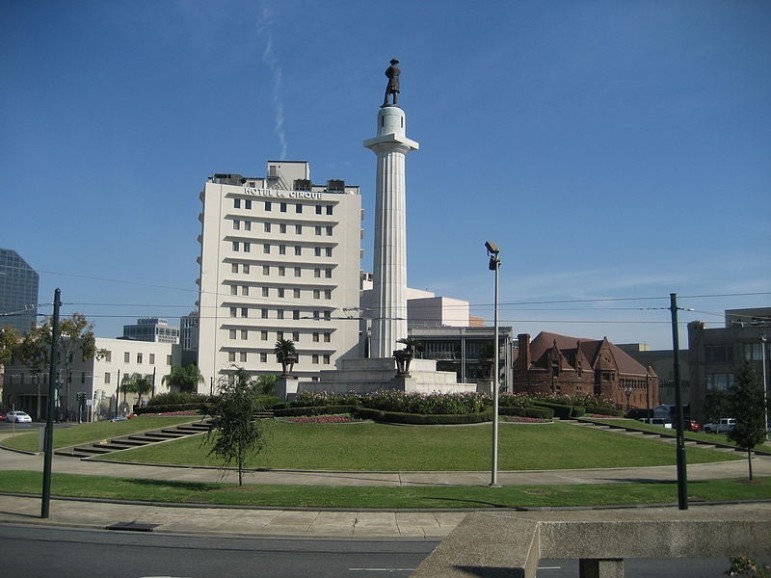
NPQ reported earlier this week as the Orange County Memorial Museum removed the physical remnants of its building’s Confederate past, but not without some pushback by the community.
A contractor has resigned in New Orleans after he received death threats for agreeing in a long=fought battle to remove four Confederate monuments in the historic city. H&O Investments of Baton Rouge has taken a step away from the project, as the city of New Orleans remains embroiled in a federal lawsuit alleging the removal of the monuments is illegal. In a hearing on Thursday, preservationist groups squared off with attorneys for the city, asking for an injunction against the removal of the monuments.
The city voted in a 6-to-1 decision in December to remove four monuments around the city in a way of sanitizing the remains of the Confederate south. The monuments in question include statues of Confederate generals Robert E. Lee and P.G.T. Beauregard, a statue of president of the Confederacy Jefferson Davis. and an obelisk commemorating the Battle of Liberty Place, which over the years has come to signify the rise of white supremacy.
Sign up for our free newsletters
Subscribe to NPQ's newsletters to have our top stories delivered directly to your inbox.
By signing up, you agree to our privacy policy and terms of use, and to receive messages from NPQ and our partners.
“The time surely comes when (justice) must and will be heard,” said NOLA Mayor Mitch Landrieu. “Members of the council, that day is today. The Confederacy, you see, was on the wrong side of history and humanity.” The plan has been to remove the statues and place them in either a museum or a Civil War commemorative park.
But preservationists don’t see the removal of the statues to a different location as an amenable compromise. In court on Thursday, attorneys for the preservationist side argued a losing argument in front of Judge Carl Barbier, who indicated the plaintiffs had a high burden. “It’s an extraordinary remedy to prevent a city or a state from enforcing its own laws,” he said. Preservationists attempted to argue that moving the statues would damage them and that the city is violating its own ordinances in moving the historic monuments, an argument the judge evidently found hard to believe, according to the Times-Picayune’s updates of the hearing.
As the judge contemplates the both sides of the controversy, we wonder if the move to preserve the monuments is strictly for the purpose of preserving history. The sole member of the City Council who opposed the proposal, Stacy Head, indicated she doesn’t feel removing the monuments will address the racist past of the City of New Orleans. We similarly questioned the purpose of students’ attempts to rename buildings on campuses when the impact will do little to change the atmosphere in society.
However, the symbolism, and in some cases the actual phrases on the monuments, serve only to stunt an evolving society. For example, at the height of Ku Klux Klan recruitment in the 1920s, New Orleans etched an inscription celebrating white supremacy. While the removal may not effect any concrete positive changes to the inherent racism of society, preserving the monuments is just as likely to preserve decades of history that will only hurt an already-enfeebled society struggling to move on.—Shafaq Hasan












